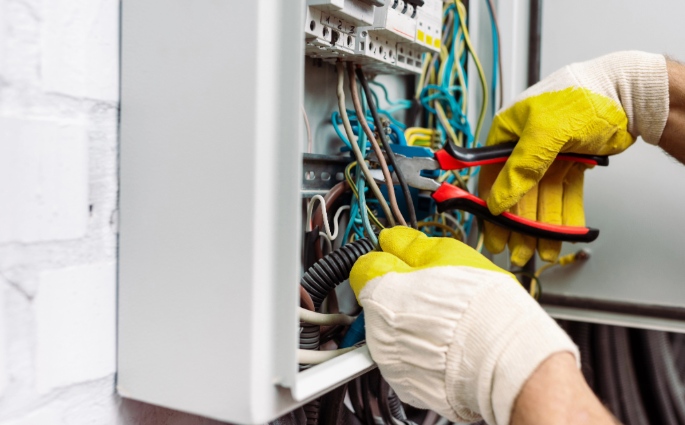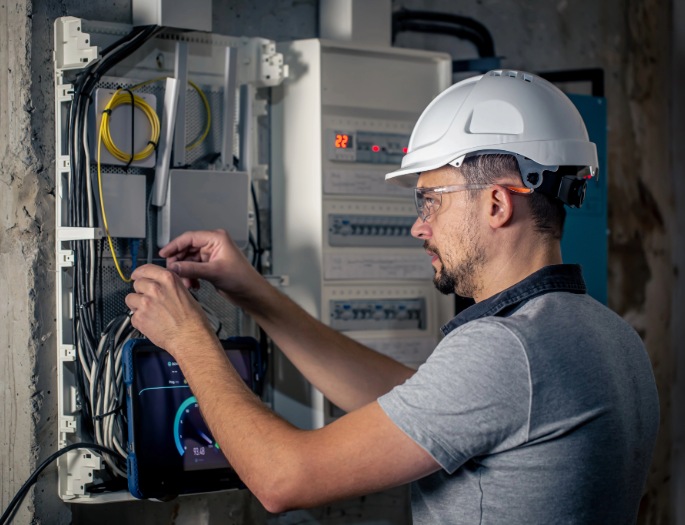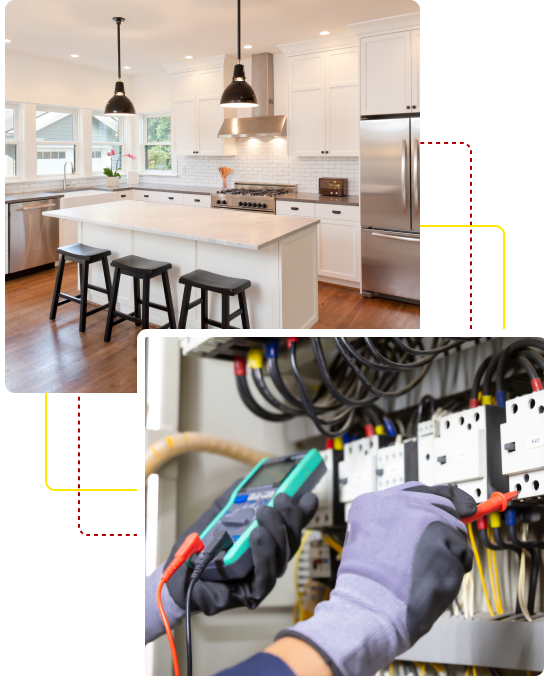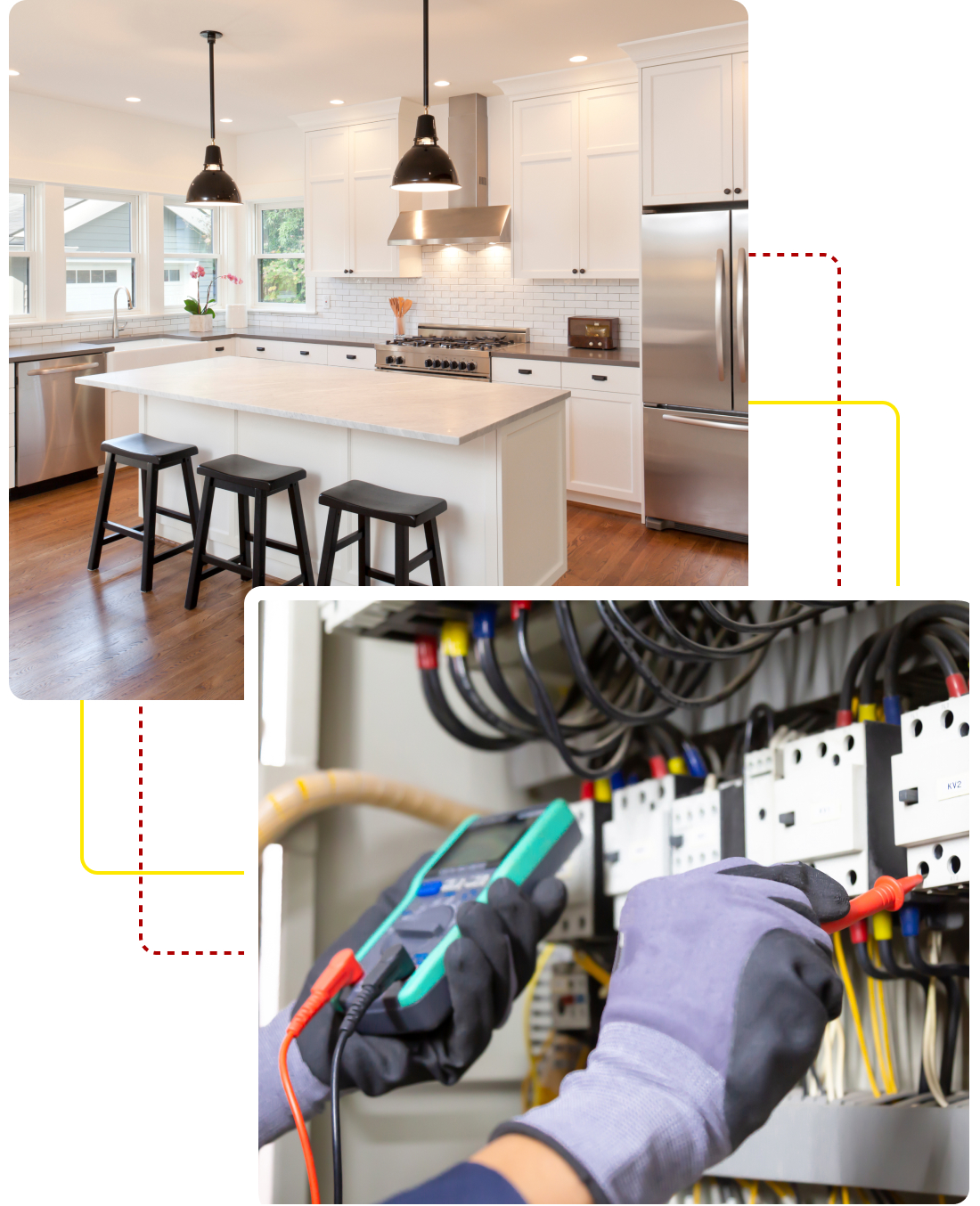Electricity powers nearly every aspect of modern living, from lighting and appliances to security systems and home automation. Understanding the types of electrical wire in your home helps you make informed decisions about repairs, upgrades, and new installations. Each wire type has a specific purpose, design, and rating, which affects safety, efficiency, and longevity.
Choosing the wrong wire can lead to overloaded circuits, damaged devices, or electrical hazards. Knowledge of wiring options allows homeowners and professionals to match the system to the needs of the property.
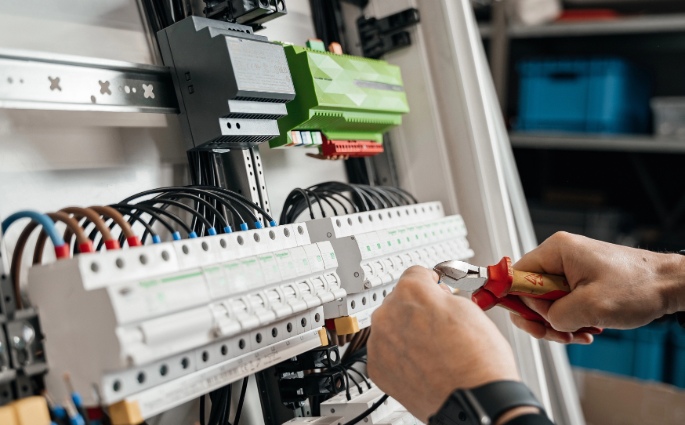
NM Cable (Nonmetallic Sheathed Cable)
NM cable, often referred to by the brand name Romex, is the most common wiring in modern homes. It consists of insulated hot and neutral wires plus a ground wire, all encased in a plastic sheath. NM cable is designed for dry, indoor locations, typically running behind walls, ceilings, and floors. The conductors inside are color-coded: black or red for hot wires, white for neutral, and bare or green for grounding. NM cables come in various gauges, typically 14 to 6 AWG, which determine the current they can safely carry.
Professional installation ensures that the cable is routed properly and protected from damage. For areas where wiring may be exposed, electricians may run NM wires inside conduit. For trusted assistance with internal wiring issues or upgrades, consult residential electricians in Houston, TX.
UF Cable (Underground Feeder Cable)
UF cable is a variation of NM cable designed for wet locations and direct burial in the ground. It is commonly used for outdoor lighting, pumps, and electrical connections to exterior buildings. Unlike NM, the individual conductors are encased in solid plastic, which protects them from moisture and environmental hazards. UF cable also includes hot, neutral, and ground conductors.
The durable insulation of UF cables allows them to handle exposure to water and soil. Installing UF wiring requires careful attention to burial depth and conduit where applicable. It is suitable for outdoor projects where weather and moisture pose a risk to electrical systems.
THHN and THWN Wire
THHN and THWN wires are single-conductor wires used primarily inside conduit systems. THHN is thermoplastic, heat-resistant, and often nylon-coated for extra protection. THWN wires are similar but rated for wet locations. These wires come in multiple colors to indicate their function: black, red, and orange for hot, white or brown for neutral, and green or green-yellow for grounding.
Conduits protect THHN and THWN wires in exposed or unfinished areas, including basements, garages, and utility spaces. They are highly versatile and can be installed for residential, commercial, and industrial systems. These wires handle higher voltages than low-voltage alternatives, making them suitable for branch circuits, feeders, and specialized equipment.
Low-Voltage Wire
Low-voltage wiring carries 50 volts or less, often used for landscape lighting, sprinkler systems, doorbells, thermostats, and speaker systems. These wires are smaller in diameter and can be copper or aluminum. Though generally safer to handle than line-voltage wiring, precautions should still be taken, especially during installation or repair.
Low-voltage wiring is typically bundled or twisted and insulated for protection. Proper planning of circuits ensures that lights, security systems, and other low-voltage devices function reliably without overloading the wires.
Phone and Data Wire
Telephone and data wiring include copper cables for landlines and internet connections. Common types are Cat 5 and Cat 6 cables, capable of carrying both phone signals and network data. They consist of multiple twisted pairs of wires to reduce interference and maintain signal quality.
Proper installation is key for performance, particularly for high-speed internet connections. Poorly installed data wiring can cause interruptions, slower speeds, or dropped connections. Running new data cables may also require routing through walls, ceilings, or conduits, depending on the home layout.
Coaxial Cable
Coaxial cables, often called coax, transmit signals for television, satellite, and internet services. The cable has a central conductor, insulating layer, braided metal shield, and outer jacket. Coaxial cables carry low voltage but must remain isolated from high-voltage wiring to prevent signal interference or hazards.
Modern homes often combine coax with other data wiring, but coax remains important for cable television and satellite connections. Proper connectors and grounding enhance both safety and signal quality.
Speaker Wire
Speaker wire is a simple two-conductor wire used to connect audio equipment to speakers. Typically, the conductors are color-coded or marked to indicate polarity. The gauge of speaker wire varies depending on the distance and the audio system’s power requirements.
Though easy to install, correct polarity is critical for sound quality. Home theater systems and built-in audio installations benefit from professional guidance to maintain signal integrity across all speakers.
Ribbon Cable
Ribbon cables are flat cables with multiple conductors running parallel to each other. They are often used in electronics, computers, appliances, and other devices with tight internal spaces. Ribbon cables allow multiple connections to be made efficiently while minimizing the space required.
They are not intended for high-voltage household circuits but are essential in low-voltage electronic systems. Their design simplifies the connection process in devices where multiple lines must run together without tangling or crossing.
Armored Cable
Armored cable, or BX cable, features a metal jacket around the conductors for protection. It can be installed in exposed interior areas without additional conduit. The metal armor also serves as a grounding path in some installations.
Armored cable is often chosen for locations where physical damage is a concern, such as basements, garages, or industrial environments. It combines the protection of conduit with flexibility for routing through confined spaces.
Metal-Clad Cable (MC)
Metal-clad cables are similar to armored cables but include additional features, such as a dedicated ground wire. MC cables often use aluminum or steel sheathing and may include internal plastic insulation. Some variants, like MC-LED cables, support lighting control systems and modern building technology.
MC cables can be installed indoors or outdoors, provided the proper PVC jacket and fittings are used for wet locations. These cables offer protection for branch circuits, feeders, and signal lines while accommodating advanced electrical needs.
PVC Jacketed MC Cable
PVC-jacketed MC cables provide additional protection for installations exposed to sunlight, moisture, or physical damage. They can be used in commercial, residential, or industrial settings and comply with safety standards. The PVC jacket resists flame, moisture, and sunlight, extending the lifespan of the wiring.
This type of cable is often selected for aerial installations or areas where standard MC or armored cables might degrade. It allows for safe routing of power, lighting, control, and signal circuits in exposed environments.
Underground Service Wire
Underground service wires, such as URD (Underground Residential Distribution) or RDC cables, are designed for utility connections and direct burial. These wires often have aluminum conductors with XLPE insulation. They can come as single, duplex, triplex, or quadruplex configurations. URD wires carry power from transformers to buildings and require careful installation to prevent damage from moisture, soil movement, or external loads. Proper depth and protective conduit, when necessary, extend the life of the underground service and maintain electrical safety.
Overhead Service Wire
Overhead service wires carry electricity from utility poles to buildings. Types include ACSR (Aluminum Conductor Steel-Reinforced) for support and triplex or quadruplex cables for delivery. These wires are designed for high-tension environments and require proper support and insulation. While most homeowners rarely interact with these wires, electricians handling new installations, repairs, or extensions must follow strict safety protocols. Proper grounding and insulation are vital to prevent electrical hazards in overhead service systems.
Tracer Wire
Tracer wire is a specialized type of wire used to locate underground pipes, conduits, or utilities. Constructed from copper and coated with durable insulation, tracer wires carry a low-voltage signal detectable by electronic locators. This wire is commonly used in water, gas, and communication lines. Tracer wire ensures that buried systems can be accurately identified before excavation, reducing the risk of accidental damage or service interruptions.
Bare Wire
Bare wire is an uninsulated conductor, typically copper, used in grounding or bonding applications. These wires are essential for completing electrical systems safely, as they provide a direct path to ground for stray currents or faults. Bare wire is often used in overhead lines, grounding rods, and industrial equipment. Proper installation prevents electrical shock, equipment damage, and fire hazards.
Service Entrance Wire
Service entrance (SE) wires connect the utility’s electrical service to a building’s main panel. SE-R (Style R) and SE-U (Style U) cables can be copper or aluminum, and they are designed for above-ground or underground service entrances. These wires carry high voltage and must meet strict code requirements for insulation, sizing, and installation. Incorrect selection or installation can compromise the safety and efficiency of the building’s electrical system.
Photovoltaic Wire
Photovoltaic (PV) wires are designed for solar power installations. They carry DC power from solar panels to inverters or distribution points. PV wires are often UV-resistant, rated for wet locations, and capable of withstanding high temperatures. These wires must maintain conductivity and insulation over long periods to ensure consistent energy production. Proper installation protects the system from shorts and energy loss.
Protect Your Home with Aaron’s Electrical Service
At Aaron’s Electrical Service, we specialize in residential and commercial wiring solutions. Our team can help you identify the correct types of electrical wire for your projects, install wiring safely, and troubleshoot existing systems. From rewiring to outlet installation, we handle every project with attention to detail and professional expertise.
Contact us for top-rated wiring, rewiring and outlet services in Houston, TX.

